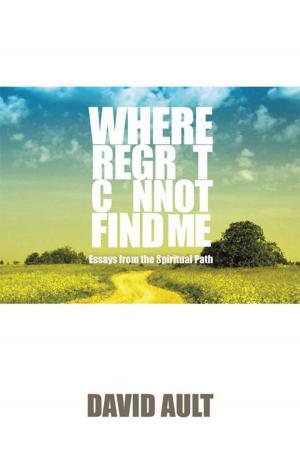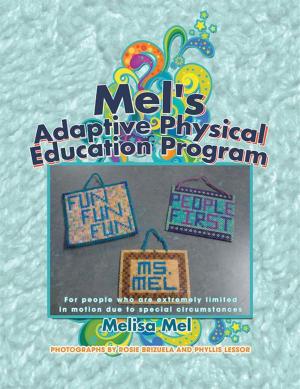Who's Really Running Your Life? Fourth Edition
Free Your True Self from Custody,And Guard Your Kids
Nonfiction, Health & Well Being, Self Help, Self Improvement, Self-Esteem| Author: | Peter K. Gerlach MSW | ISBN: | 9781456875060 |
| Publisher: | Xlibris US | Publication: | February 28, 2011 |
| Imprint: | Xlibris US | Language: | English |
| Author: | Peter K. Gerlach MSW |
| ISBN: | 9781456875060 |
| Publisher: | Xlibris US |
| Publication: | February 28, 2011 |
| Imprint: | Xlibris US |
| Language: | English |
Links below will take you to the non-profit Break the Cycle! Web site. Use your browser’s back button to return.
Premise - psychological "wounding" is epidemic in America because of an unseen inherited cycle of ineffective parenting and ignorance. This book describes the wounds, what they mean, and what to do about them.
This fourth edition (Feb. 2011) will introduce you to your inner family, and who leads it in calm and crisis times. If you don’t know who comprises your inner crew or who’s in charge of them, you may be living life as a hostage to a false self and not know it. If so, you’re probably living well below your potential, and may also be wounding kids in your life without meaning to. The rest of the book outlines an effective way to reduce any significant wounds, and live a calmer, more authentic, productive, satisfying life.
Notice your reaction to these proposals and to the book´s title. I suspect you think “Well I am running my life!” Sure - but have you ever thought about who “I” is?
Reality check: Have you ever had experiences like these?
• Blowing hot and cold about someone or something?
• Saying “On one hand,… and on the other…”?
• Obsessively second-guessing (doubting) an important decision you’ve made?
• Having “discussions” or "arguments" with yourself inside your head?
• An “inner voice” ceaselessly berating you for being stupid, dumb, weird, or unlovable?
• Loved and hated someone at the same time?
• Wanted to do something and simultaneously not wanted to do it?
• Done something impulsive and later thought “What got into me?”
• Known people who seemed two-faced, talked out of both sides of their mouth, and “like two different people”?
• Felt “young” when around an authority figure or perhaps a critical parent?
yellow or mean streak, a blue mood a musical side, a silver tongue, or a way with kids?
These are everyday signs of an invisible condition that shapes the lives of you and everyone you know. It’s based on a marvelous survival feature of our human neural system recently called multiplicity: our brain’s wired-in ability to respond to childhood environmental threat by fragmenting into regions with special abilities.
Using radiographic PET scans, we’re the first generation in history to be able to see these regions operating concurrently. The unitary experience of “I see my child laugh” involves many regions of your brain at once without your knowing it. So does everything you do!
Main Ideas
This book results from my professionally studying and practicing inner family therapy ("parts work") since 1992. It describes what I’ve come to believe without question about average women and men like you:
Normal people have personalities that are composed of a group of subselves or parts, like members of an orchestra or athletic team. Each subself has it’s own talent or gift, it’s own values, goals, and limitations. Our inner families of subselves can range from harmonious to chaotic in calm and crisis times.
The nature of our subselves and the relationships among them are determined in the first several years of life of average kids. If kids are
Links below will take you to the non-profit Break the Cycle! Web site. Use your browser’s back button to return.
Premise - psychological "wounding" is epidemic in America because of an unseen inherited cycle of ineffective parenting and ignorance. This book describes the wounds, what they mean, and what to do about them.
This fourth edition (Feb. 2011) will introduce you to your inner family, and who leads it in calm and crisis times. If you don’t know who comprises your inner crew or who’s in charge of them, you may be living life as a hostage to a false self and not know it. If so, you’re probably living well below your potential, and may also be wounding kids in your life without meaning to. The rest of the book outlines an effective way to reduce any significant wounds, and live a calmer, more authentic, productive, satisfying life.
Notice your reaction to these proposals and to the book´s title. I suspect you think “Well I am running my life!” Sure - but have you ever thought about who “I” is?
Reality check: Have you ever had experiences like these?
• Blowing hot and cold about someone or something?
• Saying “On one hand,… and on the other…”?
• Obsessively second-guessing (doubting) an important decision you’ve made?
• Having “discussions” or "arguments" with yourself inside your head?
• An “inner voice” ceaselessly berating you for being stupid, dumb, weird, or unlovable?
• Loved and hated someone at the same time?
• Wanted to do something and simultaneously not wanted to do it?
• Done something impulsive and later thought “What got into me?”
• Known people who seemed two-faced, talked out of both sides of their mouth, and “like two different people”?
• Felt “young” when around an authority figure or perhaps a critical parent?
yellow or mean streak, a blue mood a musical side, a silver tongue, or a way with kids?
These are everyday signs of an invisible condition that shapes the lives of you and everyone you know. It’s based on a marvelous survival feature of our human neural system recently called multiplicity: our brain’s wired-in ability to respond to childhood environmental threat by fragmenting into regions with special abilities.
Using radiographic PET scans, we’re the first generation in history to be able to see these regions operating concurrently. The unitary experience of “I see my child laugh” involves many regions of your brain at once without your knowing it. So does everything you do!
Main Ideas
This book results from my professionally studying and practicing inner family therapy ("parts work") since 1992. It describes what I’ve come to believe without question about average women and men like you:
Normal people have personalities that are composed of a group of subselves or parts, like members of an orchestra or athletic team. Each subself has it’s own talent or gift, it’s own values, goals, and limitations. Our inner families of subselves can range from harmonious to chaotic in calm and crisis times.
The nature of our subselves and the relationships among them are determined in the first several years of life of average kids. If kids are















